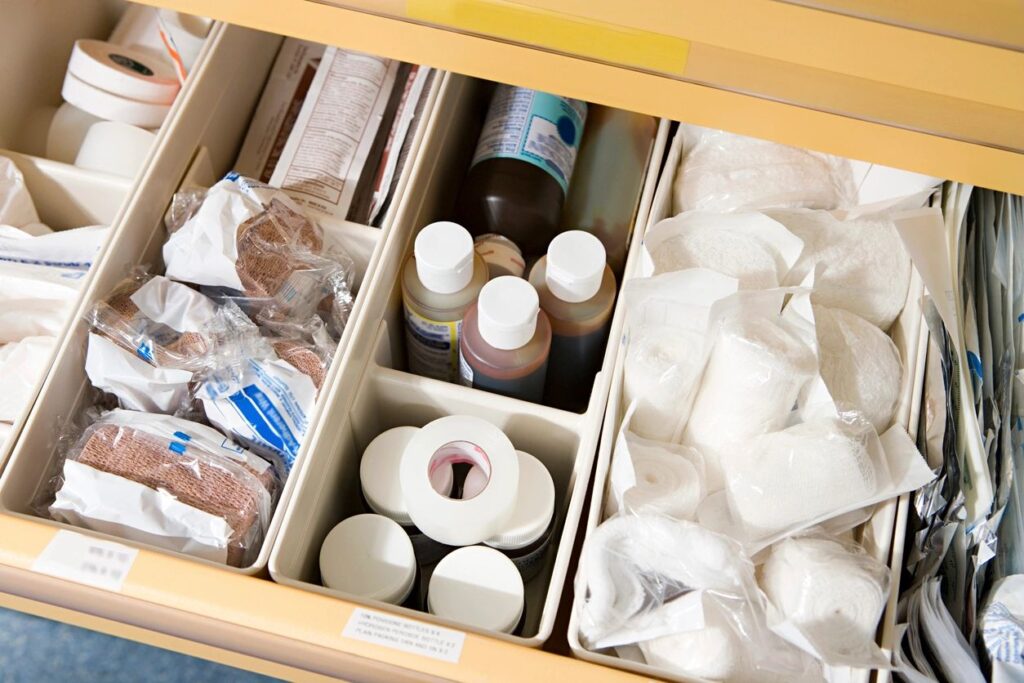Medical Equipment and Supplies for Home Healthcare: Empowering Patients for Better Recovery

Medical Equipment and Supplies for Home Healthcare:
Empowering Patients for Better Recovery
Medical Equipment and Supplies for Home Healthcare: Empowering Patients for Better Recovery
In recent years, the healthcare landscape has witnessed a notable shift towards personalized care, with more patients opting for home healthcare solutions. This shift is primarily driven by advancements in medical technology and the growing understanding that a comfortable and familiar environment can significantly contribute to a patient’s recovery process. Home healthcare allows patients to receive medical attention while staying in the comfort of their own homes, surrounded by their loved ones.One critical aspect of home healthcare is the availability of medical equipment and supplies that facilitate efficient and effective care. In this blog post, we will explore various types of medical equipment and supplies designed for home use, their benefits, and how they empower patients to take charge of their health and well-being.
Get Better With Algebra Healthcare

Visit our Social Media & Read Blogs
Your Good Health Is Just A Call Away
+971 501 317 063 / 800 200 100

Mobility Aids
Wheelchairs and Mobility Scooters:
For patients with limited mobility, wheelchairs and mobility scooters are invaluable assets that enhance their independence. These devices enable patients to move around their homes or even venture outside, improving their quality of life significantly.
Walking Aids:
Walking sticks, crutches, and walkers are essential aids for patients who require support while walking. These devices provide stability and help prevent falls, allowing patients to move about safely.
Home Monitoring Devices
Blood Pressure Monitors:
Patients with hypertension or cardiovascular conditions can monitor their blood pressure regularly using home blood pressure monitors. Regular tracking empowers patients to manage their condition proactively and enables healthcare providers to adjust treatment plans if necessary.
Blood Glucose Monitors:
Diabetic patients can closely monitor their blood glucose levels at home, allowing them to make informed decisions about their diet, exercise, and medication. Regular monitoring aids in better glycemic control and reduces the risk of complications.
Pulse Oximeters:
Pulse oximeters measure oxygen saturation levels in the blood and heart rate. These devices are particularly helpful for patients with respiratory conditions, enabling them to monitor their oxygen levels and seek timely medical assistance if needed.
Respiratory Support Equipment
CPAP and BiPAP Machines:
Patients with sleep apnea can benefit from Continuous Positive Airway Pressure (CPAP) or Bilevel Positive Airway Pressure (BiPAP) machines. These devices maintain proper airway pressure, ensuring uninterrupted breathing during sleep.
Nebulizers:
Nebulizers are widely used for patients with respiratory conditions, such as asthma or chronic obstructive pulmonary disease (COPD). They convert medication into a fine mist, making it easier for patients to inhale the medicine directly into their lungs.
Oxygen Concentrators:
Oxygen concentrators deliver oxygen to patients with low blood oxygen levels. They are particularly useful for patients with chronic respiratory conditions who need constant oxygen therapy.
Wound Care Supplies
Dressing Materials:
Home healthcare often involves the management of wounds, ulcers, or surgical incisions. Various dressing materials, such as sterile gauze, adhesive bandages, and wound dressings, aid in promoting healing and preventing infections.
Topical Solutions:
Antiseptic solutions, antibiotic ointments, and wound cleansers are essential supplies for maintaining proper wound hygiene.
Personal Care and Hygiene Aids
Bedside Commodes:
For patients with mobility challenges or incontinence issues, bedside commodes offer a convenient and hygienic solution, reducing the need to travel to the bathroom frequently.
Grab Bars and Handrails:
Installing grab bars and handrails in bathrooms and hallways can prevent falls and provide support to patients while moving around the house.
Pain Management Devices
TENS Units: Transcutaneous Electrical Nerve Stimulation (TENS) units use electrical impulses to alleviate pain. They are commonly used for chronic pain management in various conditions, including arthritis and back pain.
Home Safety Equipment
Medical Alert Systems:
Medical alert systems, often in the form of wearable devices or pendants, allow patients to call for help in case of emergencies, ensuring quick medical attention when needed.
Fall Detection Devices:
Fall detection devices can automatically detect a fall and alert caregivers or emergency services, providing peace of mind to patients and their families.
Telemedicine and Remote Monitoring
The integration of telemedicine in home healthcare has revolutionized patient care. Remote consultations with healthcare professionals enable patients to discuss their health concerns, receive medical advice, and even have their conditions remotely monitored.
Enhance Patient Comfort:
Familiar surroundings and personalized care foster a sense of comfort and security for patients, aiding in their recovery and overall well-being.
Reduce Healthcare Costs:
Home healthcare can be more cost-effective than hospital stays, leading to reduced healthcare expenditures for both patients and insurance providers.
Minimize Hospital Readmissions:
Proper use of medical equipment at home can lead to better management of chronic conditions, preventing unnecessary hospital readmissions.
Types of Home Healthcare Equipment
A wide range of medical equipment and supplies are available for home healthcare. These can be broadly categorized into:
Mobility Aids:
These include devices like wheelchairs, walkers, and crutches, which enable patients with limited mobility to move around comfortably and safely.
Monitoring Devices:
Monitoring devices such as blood pressure monitors, glucose meters, and pulse oximeters help patients track their vital signs and manage chronic conditions effectively.
Personal Care Aids:
These tools include commodes, shower chairs, and dressing aids, promoting patient independence in performing daily activities.
Respiratory Equipment:
Patients with respiratory conditions may require devices like oxygen concentrators, nebulizers, and CPAP machines to manage their symptoms at home.
Wound Care Supplies:
Proper wound care is essential for many patients. Home healthcare may involve dressings, bandages, wound cleansers, and other supplies for wound management.
Home Infusion Equipment:
Patients receiving intravenous treatments at home may require infusion pumps, catheters, and other related supplies.
Assistive Technology:
Technological innovations like home telemedicine equipment and smart devices offer remote monitoring and communication with healthcare providers.
The availability of medical equipment and supplies for home healthcare has transformed the way patients receive medical attention:
From mobility aids to advanced monitoring devices, these tools empower patients to actively participate in their recovery and disease management processes. As technology continues to evolve, the landscape of home healthcare will only improve, offering patients a more personalized and efficient approach to achieving better health and well-being in the comfort of their own homes.
